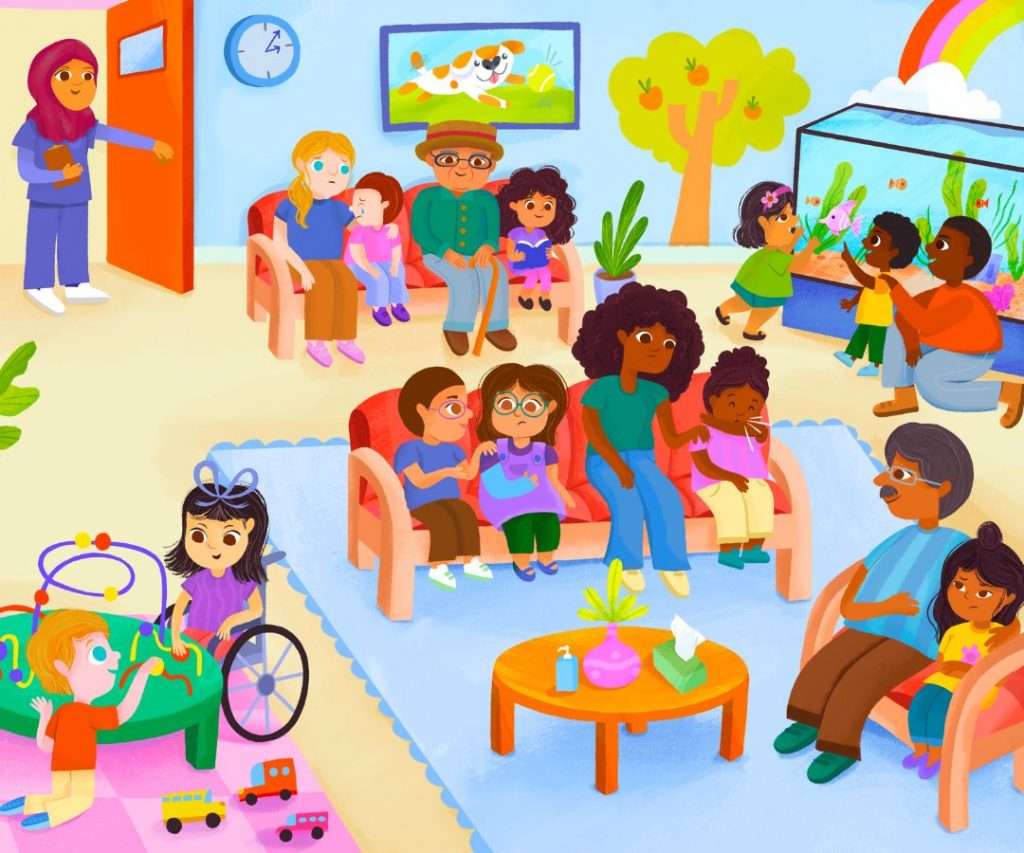Discussing Race
Lesson 4: That's Not Fair
Lesson Goals
- Help students identify unfair or racist behavior
- Empower students to help in in unfair situations
Lesson Description
Use the illustration, “Exploring Exclusion” to help students think about how it feels to be excluded. Older children can consider what it means to be “fair” and begin to think about reasons why someone might be treated unfairly, including racism.

Lesson Plan: What Are Feelings?
Play "Us Time" Song
Review Agreements
Discussion: Exploring Exclusion
Storytime: Exploring Exclusion
Dance to "Up, Up, Up"
Closing Discussion: Empathy
Thank You: Share the Us Time Closing Song
Standards
Early Learning Outcomes Framework: Goal P-SE:3, Goal P-SE:5, Goal P-SE:6, Goal P-SE:7, Goal P-LC 1, Goal P-LC 4, Goal P-LC 5, Goal P-LC 6.
CT ELDS:SE.36.7, SE.36.8, SE.48.7, SE.48.8, SE.60.9, SE.60.10, SE.48.15, SE.60.19, SS.48.4, SS.48.5, SS.60.3, L.36.5, L.48.5, L.60.5, L.36.7, L.48.7, L.48.11, L.36.14, L.48.13, L.48.15.
Vocabulary
Fair
Exclude
Racism
What You'll Need
- Family Photos Collage
- Family photos from each student
- Board or big paper and pens for creating graph/visualization
- “Us Time” song
- “Thank You” goodbye song
Lesson Quick Links
- “Us Time” song
- Family Photos Collage
- “Thank You” goodbye song
- Discussing Race with Young Children guide
Family Engagement Materials
From this lesson, you can share:
- “Us Time” song
- Discussing Race with Young Children: A Step-By-Step Activity Guide
Activity: Get-Well Gift
Activity: For the Birds
- Community Colors interactive (also available in the Sparkler app for programs using Sparkler)
- “Thank You” goodbye song




